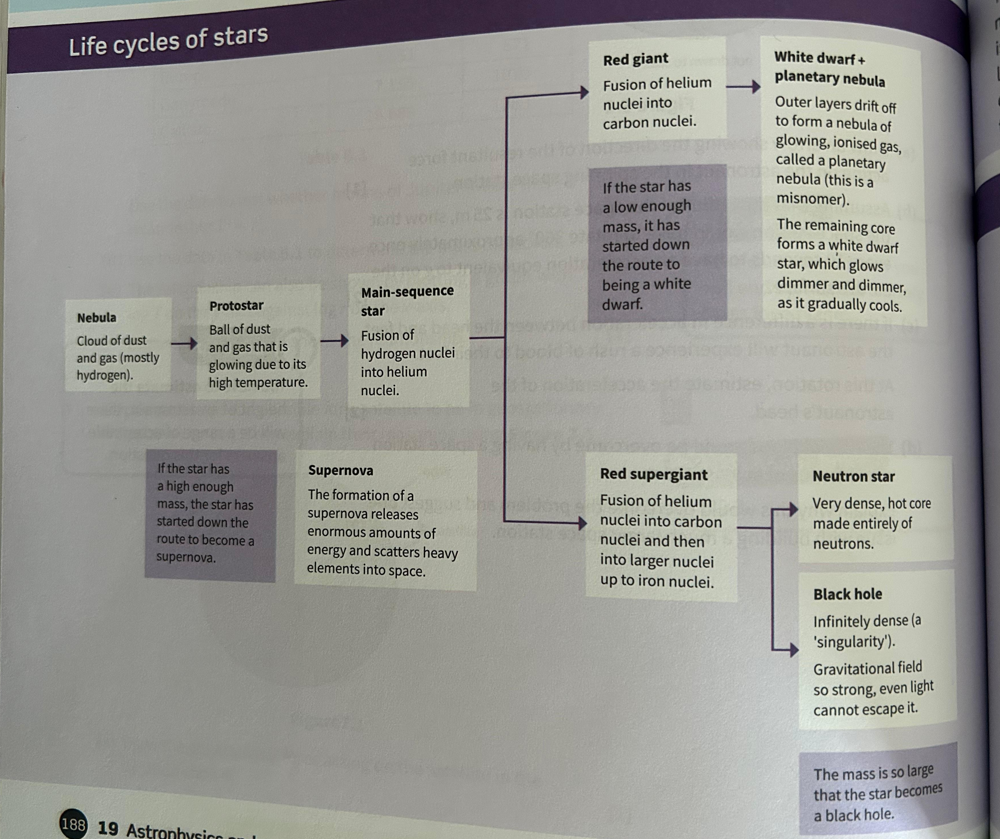Life Cycle of Stars
1/25
There's no tags or description
Looks like no tags are added yet.
Name | Mastery | Learn | Test | Matching | Spaced |
|---|
No study sessions yet.
26 Terms
How does star formation begin
Interstellar cloud experiences a gravitational collapse.
The GPE is converted into KE.
According to: KE = 3/2 kT, as energy increases, temperature increases.
This makes a protostar
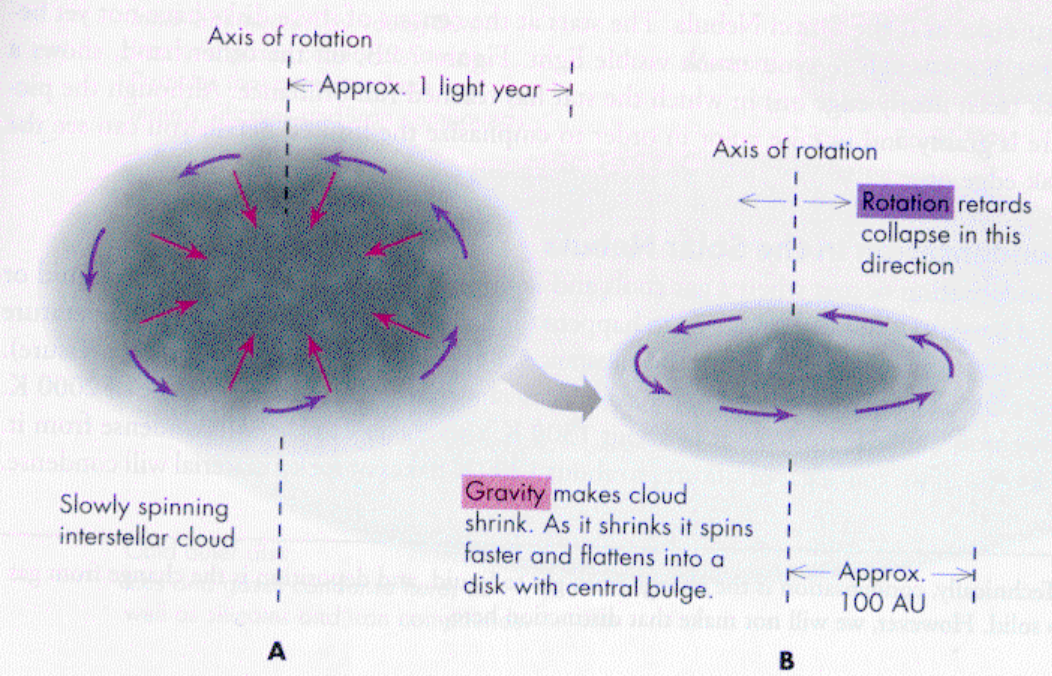
What is a Protostar
Made from denser clumps of matter which continue to contract and heat up.
Does not give out visible light
No nuclear fusion
The core becomes hotter eventually to reach 10^7
At what temperature nuclear reactions occur
10^7 K
What happens at 10^7 K
Hydrogen nuclei fuse into helium producing thermal energy and radiation.
Mass is converted into energy in this process.
E=mc²
A High temperature is needed to overcome the nuclei's electrostatic repulsion.
Main Sequence Star
Gravitational force compresses the star, but photons released by nuclear fusion and gas pressure from the nuclei act outward and counterbalance the gravitational contraction.
A star is stable in hydrostatic equilibrium with an almost constant size. The more massive a star is, the hotter it is, and it converts hydrogen to helium faster; however, it will remain stable for a shorter period.
Relationship between star size and stability period
A more massive star will remain stable for a shorter period of time as it will burn through all its available hydrogen in fewer years
Red Giant (0.5-1.0 Solar Masses)
Nuclear fusion stops when hydrogen in the core runs out.
Star evolves from the main sequence to a red giant
Core contracts and heats up as gravity works on the matter in the star’s core
Shell hydrogen burning happens when hydrogen present in the outer surface of the core is heated from this contraction and is now available to undergo fusion
The heat released causes the outer layers of gas to expand
The core is inert and no nuclear fusion occurs
Shell hydrogen burning Red Giant
Shell hydrogen burning happens when hydrogen present in the outer surface of the core is heated from this contraction and is now available to undergo fusion
Heat released from this causes the outer layers of gas in the star to expand resulting in the cooling of the star’s outer layers and the formation of the red giant
Is the core of the red giant inert
Yes. No nuclear fusion occurs in it except the thin shell of hydrogen fusion around its surface
How is a planetary nebula formed
The heat from the core of a red giant continues to cause the outer layers of the star to expand
eventually, these layers expand so much that they form a planetary nebula a diffuse cloud of gas
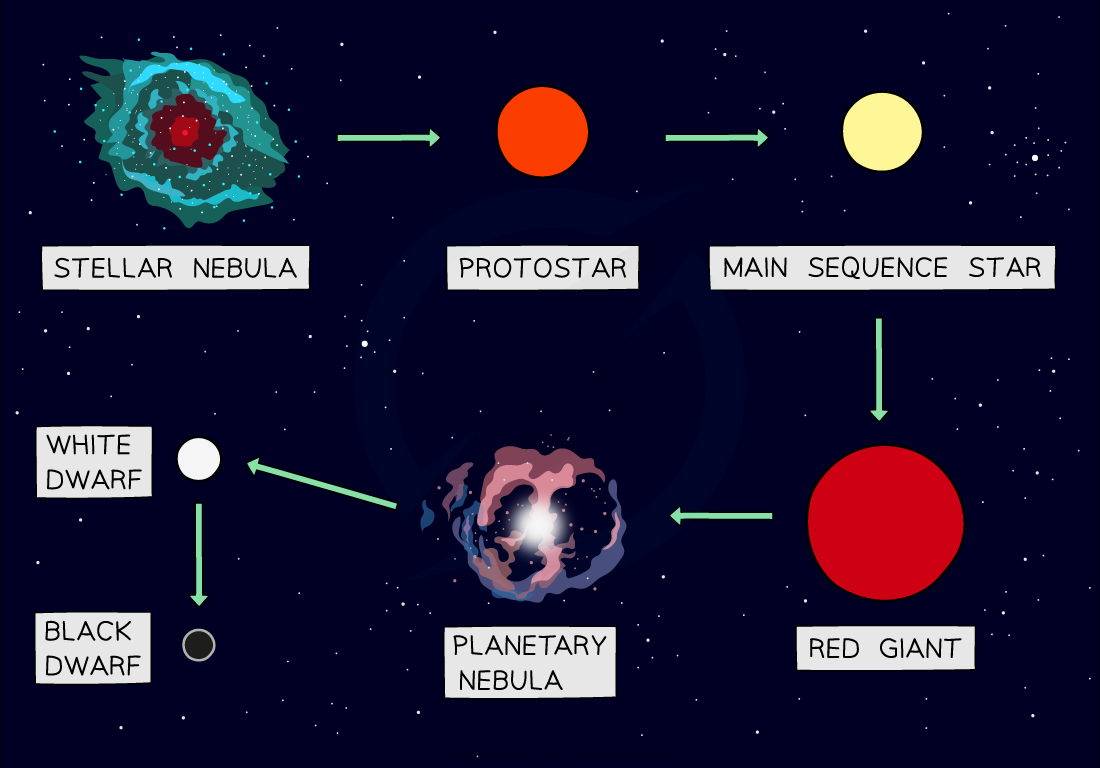
What happens to the core of the nebula
The core is left behind in the centre of the nebula and forms a white dwarf
Are there any nuclear fusion reactions in a white dwarf? Why does it shine?
No therefore there is nothing preventing the gravity from causing the star to contract further
It shines as a result of the huge amounts of thermal energy still stored inside it
What does the stability of a dwarf depend on?
Its mass.
If it is below the Chandrasekhar limit (1.44 Solar Masses) collapse is prevented by electron degeneracy pressure.
If it is above the limit, it will explode into a Type 1a supernova
What happens to the white dwarf when it cools off
Becomes a black dwarf
What is electron degeneracy pressure
In quantum physics, two electrons cannot exist in the same energy state.
So when the core of a star begins collapsing under the force of gravity, electrons are squeezed together.
This creates a pressure which prevents the core from further gravitational collapse.
This pressure is the electron degeneracy pressure.
What does a star heavier than 10 solar masses turn into
Once all the hydrogen in its core has been converted into helium the core will still be hot enough for more nuclear fusion to occur.
The star evolve from the main sequence into a red supergiant
What reaction takes place in the core of a red supergiant
Helium fusing to make carbon
If hot enough, carbon fuses to make oxygen
oxygen to make neon and so on
Successive stages of fusion occur in shells around the core
No fusion in outer layers of the star

What happens in successive fusions
They release more energy heating up the core more
They take less time
What happens when iron is formed
No further stages of nuclear fusion occur
Star has an inert core of iron
No longer sufficient radiation pressure being produced to counteract the gravity
So the star collapses
What happens when a red supergiant collapses
The outer layer of the star rapidly falls inwards and then bounces off the core
This results in a core-collapse supernova
What happens during the supernova
The outer layers of the star are ejected away at very high energies
They leave behind the core, which will become either a neutron star or a black hole depending on its mass

How do heavier elements than iron form
By rapid nuclear fusion processes in the supernovae
What happens if the remnant is less that about 3 solar masses
It forms a neutron star
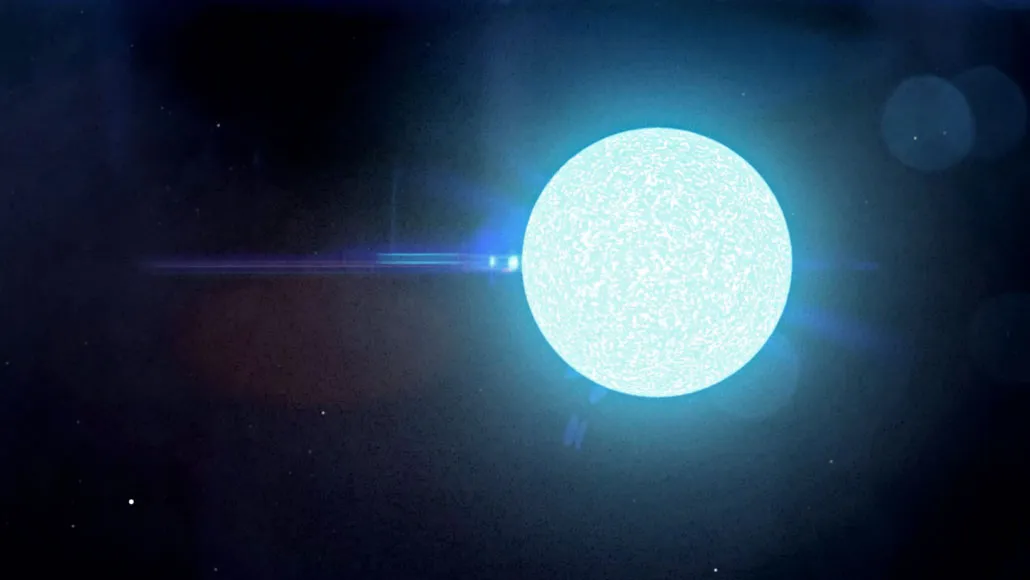
What happens to produce a neutron star
The intense pressure of the explosion causes the protons in the star to capture electrons forming neutrons
Neutron stars are made entirely of neutrons and are extremely dense. About 10 17 kg m-3
They remain stable due to neutron degeneracy pressure
Black hole is formed if
The supernova remnant is more than 3 solar masses
Once a supernova occurs the remains of the star form a black hole
Its gravitational field is so strong even light cannot escape it
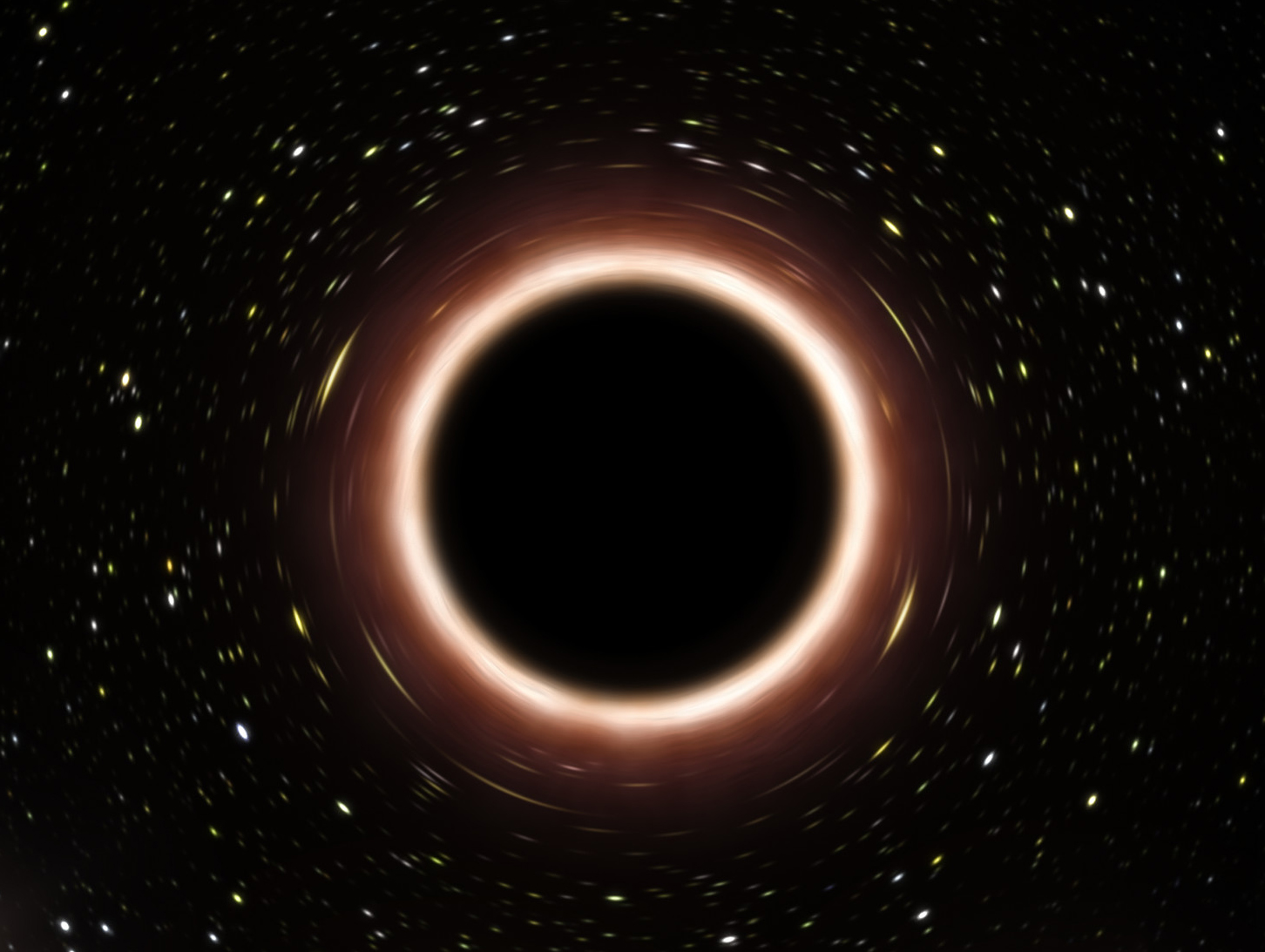
Summary of the life cycle of stars
